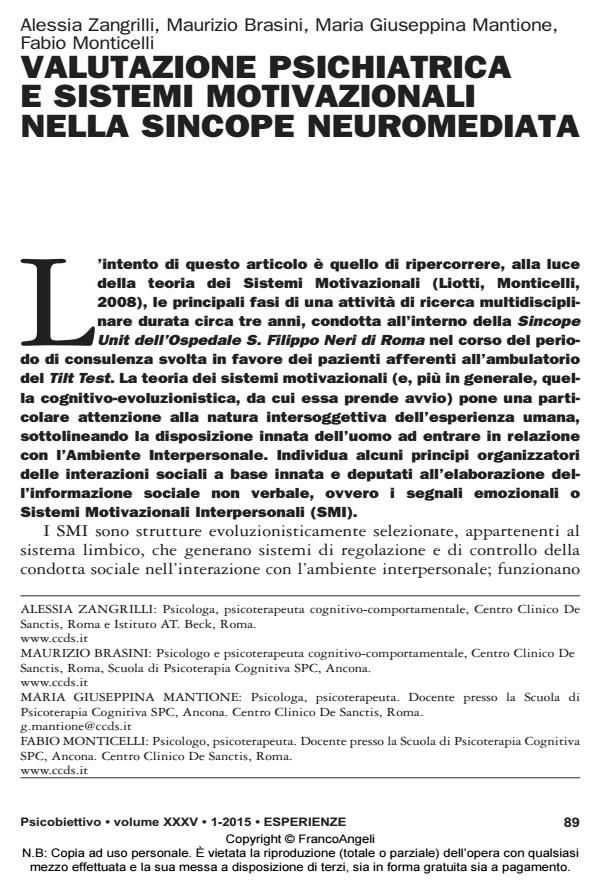valutazione psichiatrica e sistemi motivazionali nella sincope neuromediata
Titolo Rivista PSICOBIETTIVO
Autori/Curatori Alessia Zangrilli, Maurizio Brasini, Maria Giuseppina Mantione, Fabio Monticelli
Anno di pubblicazione 2015 Fascicolo 2015/1
Lingua Italiano Numero pagine 19 P. 89-107 Dimensione file 138 KB
DOI 10.3280/PSOB2015-001006
Il DOI è il codice a barre della proprietà intellettuale: per saperne di più
clicca qui
Qui sotto puoi vedere in anteprima la prima pagina di questo articolo.
Se questo articolo ti interessa, lo puoi acquistare (e scaricare in formato pdf) seguendo le facili indicazioni per acquistare il download credit. Acquista Download Credits per scaricare questo Articolo in formato PDF

FrancoAngeli è membro della Publishers International Linking Association, Inc (PILA)associazione indipendente e non profit per facilitare (attraverso i servizi tecnologici implementati da CrossRef.org) l’accesso degli studiosi ai contenuti digitali nelle pubblicazioni professionali e scientifiche
Il presente articolo riporta i risultati di tre studi incentrati sull’ipotesi che la sincope neuromediata tragga origine da un processo psicopatologico dissociativo "somatoforme". Il primo studio, condotto su un campione di 61 pazienti, indaga le possibili relazioni tra una storia evolutiva di tipo traumatico, la presenza di sintomi dissociativi e lo sviluppo della sincope vasovagale. Nel secondo studio, è stata condotta una valutazione psichiatrica di 31 pazienti affetti da sindrome vasovagale, con particolare attenzione alla sintomatologia, sia di entità clinica che subclinica, riferita ad aspetti dissociativi o alla difficoltà di identificazione delle proprie emozioni (alessitimia). Infine, nel terzo studio si è rilevato l’assetto motivazionale di 30 pazienti affetti da sincope vasovagale con il metodo AIMIT; l’ipotesi di ricerca è che in tali pazienti una focalizzazione sui propri problemi (sintomi somatici) costituisca una strategia compensatoria a fronte di una tendenza sottostante ad un crollo dissociativo. I risultati confermano in via preliminare le ipotesi avanzate.
Parole chiave:Sistemi Motivazionali Interpersonali (SMI); sincope neuromediata; dissociazione; alessitimia.
Alessia Zangrilli, Maurizio Brasini, Maria Giuseppina Mantione, Fabio Monticelli, valutazione psichiatrica e sistemi motivazionali nella sincope neuromediata in "PSICOBIETTIVO" 1/2015, pp 89-107, DOI: 10.3280/PSOB2015-001006